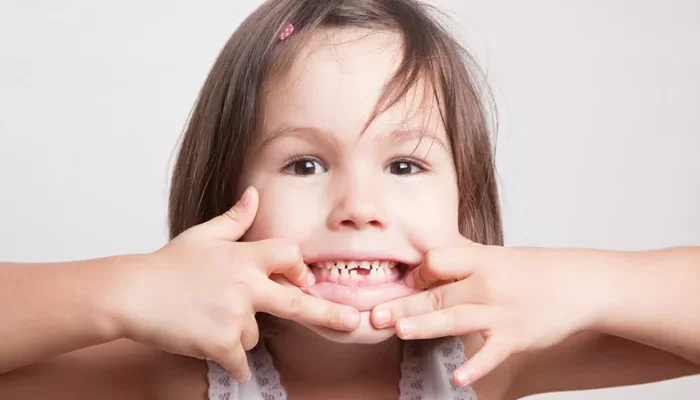Tooth decay is one of the most common childhood diseases. It can lead to pain, infection, and even loss of teeth if not treated properly. As parents, it is crucial to understand how to prevent tooth decay in children. At York Children’s Dentistry, we emphasize the importance of early dental care and preventive measures. In this article, we will discuss three essential tips for preventing tooth decay in children. These tips are simple yet effective in promoting good oral health.
Understanding Tooth Decay
What Is Tooth Decay?
Tooth decay, also known as dental caries, occurs when bacteria in the mouth produce acids that erode the tooth enamel. This process can lead to the formation of cavities. Cavities are small holes in the teeth that can cause pain and discomfort. If left untreated, tooth decay can progress deeper into the tooth, affecting the pulp and leading to more severe dental issues.
Why Are Children at Risk?
Children are particularly susceptible to tooth decay for several reasons:
Diet: Many children consume sugary snacks and drinks that contribute to the development of cavities.
Oral Hygiene: Young children may not brush their teeth effectively, leading to plaque buildup.
Lack of Awareness: Children may not understand the importance of maintaining good oral health.
As parents, it is essential to take proactive steps to protect your child’s teeth from decay.
Tip 1: Establish a Consistent Oral Hygiene Routine
Importance of Oral Hygiene
Good oral hygiene is the foundation of preventing tooth decay. Establishing a consistent routine helps children develop healthy habits that can last a lifetime. Here are some key practices to include in your child’s oral hygiene routine:
Brushing Teeth
Frequency: Children should brush their teeth at least twice a day—once in the morning and once before bed.
Technique: Teach your child to use a soft-bristled toothbrush and fluoride toothpaste. Encourage them to brush for at least two minutes, covering all surfaces of the teeth.
Supervision: Young children may need help with brushing. Supervise their brushing until they are about 7 or 8 years old to ensure they are doing it correctly.
Flossing
When to Start: Flossing should begin when your child has two teeth that touch. This usually occurs around age 2 or 3.
Technique: Show your child how to use dental floss properly. Flossing removes food particles and plaque from between the teeth, where a toothbrush may not reach.
Regular Dental Check-Ups
Frequency: Schedule regular dental check-ups every six months. These appointments allow the dentist to monitor your child’s oral health and catch any issues early.
Professional Cleaning: During check-ups, the dentist or hygienist will perform professional cleanings to remove tartar and plaque buildup.
Tip 2: Promote a Healthy Diet
The Role of Diet in Oral Health
What your child eats plays a significant role in their dental health. A balanced diet can help prevent tooth decay. Here are some dietary tips to promote healthy teeth:
Limit Sugary Foods and Drinks
Understanding Sugars: Sugary foods and beverages are the primary culprits behind tooth decay. Bacteria in the mouth feed on sugars and produce harmful acids.
Alternatives: Instead of sugary snacks, offer healthier options like fruits, vegetables, and whole grains. These foods not only support overall health but also help protect teeth.
Encourage Water Consumption
Water as a Drink of Choice: Encourage your child to drink water, especially fluoridated water. Fluoride helps strengthen tooth enamel and can reduce the risk of cavities.
Limit Sugary Drinks: Limit the consumption of sodas, sports drinks, and fruit juices. If your child does drink these, encourage them to use a straw to minimize contact with teeth.
Healthy Snacks
Nutritious Choices: Provide healthy snacks such as cheese, yogurt, nuts, and raw vegetables. These foods can help neutralize acids in the mouth and provide essential nutrients for dental health.
Timing: Encourage your child to eat snacks at set times rather than grazing throughout the day. Frequent snacking can increase the risk of tooth decay.
Tip 3: Use Dental Sealants and Fluoride Treatments
What Are Dental Sealants?
Dental sealants are a preventive measure that can protect your child’s teeth from decay. They are thin coatings applied to the chewing surfaces of the back teeth (molars) where cavities often form.
Benefits of Dental Sealants
Barrier Against Decay: Sealants create a protective barrier that keeps food and bacteria out of the grooves and pits of the teeth.
Long-Lasting Protection: Sealants can last for several years with proper care, making them an effective preventive measure.
The Importance of Fluoride
Fluoride is a mineral that helps strengthen tooth enamel and prevent decay. It can be found in various sources:
Fluoride Toothpaste
Daily Use: Make sure your child uses fluoride toothpaste when brushing their teeth. This helps provide a continuous supply of fluoride to strengthen enamel.
Professional Fluoride Treatments
Dental Office Application: During dental visits, your dentist may recommend professional fluoride treatments. These treatments involve applying a concentrated fluoride solution to your child’s teeth.
Frequency: Depending on your child’s risk of decay, your dentist may suggest fluoride treatments every six months or more frequently.
Conclusion
Preventing tooth decay in children is essential for their overall health and well-being. By establishing a consistent oral hygiene routine, promoting a healthy diet, and utilizing dental sealants and fluoride treatments, parents can significantly reduce the risk of cavities. At York Children’s Dentistry, we believe that early intervention and education are key to maintaining healthy smiles for children.
As parents, your involvement in your child’s dental care is crucial. Teach them the importance of good oral hygiene, encourage healthy eating habits, and ensure they have regular dental check-ups. By taking these steps, you can help your child enjoy a lifetime of healthy teeth and a beautiful smile. Remember, prevention is always better than treatment!
Related topics:

